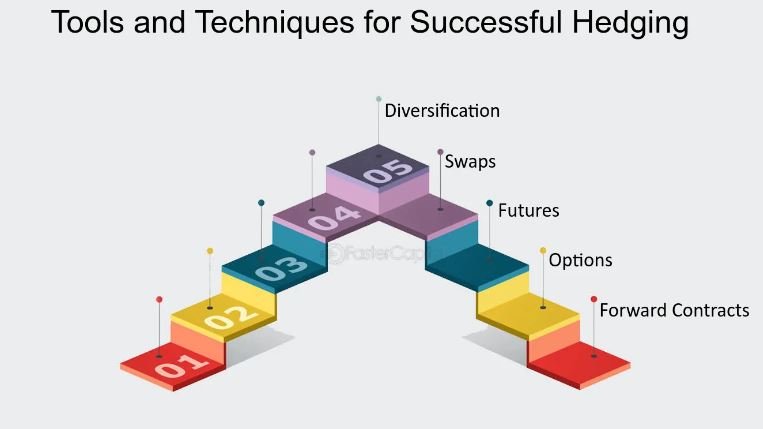Introduction:
Hedge trading has become a vital strategy for investors looking to manage risks and maximize returns in an increasingly volatile financial market. As a sophisticated approach to investment, it involves using various financial instruments to offset potential losses in a portfolio. In this article, we explore the fundamentals of hedge trading, the role of technology in revolutionizing this sector, and the innovative strategies employed by a hedge trader to ensure efficient trading practices.
Understanding Hedge Trading
At its core, hedge trading is about protection. Investors use it to “hedge” against potential market downturns or adverse price movements in assets they hold. This strategy is particularly useful in times of economic uncertainty or market volatility, where the risk of losses can be significant. By strategically using derivatives such as options, futures, and swaps, traders can limit their exposure to these risks while still participating in the market’s growth.
Hedge trading is not limited to avoiding losses; it also includes optimizing profits. Skilled traders can use hedge strategies to capitalize on market inefficiencies and price disparities, thereby enhancing their overall returns. This dual focus on risk management and profit optimization makes hedge trading a compelling choice for sophisticated investors.
The Role of Technology in Hedge Trading
The landscape of hedge trading has evolved significantly with the advent of advanced technologies. One of the most transformative developments is the integration of artificial intelligence (AI) in trading platforms. Specifically, the deployment of AI models like GPT-4, developed by OpenAI, has revolutionized how trading strategies are conceived and executed.
Autonomous Trading Powered by AI GPT-4
Incorporating AI, particularly GPT-4, into trading systems enables a new level of sophistication and precision. These AI models can analyze vast amounts of technical and economic data, identifying patterns and trends that might be missed by human traders. The real advantage lies in the system’s ability to operate autonomously. By processing data continuously, AI-driven platforms can execute trades 24/7, making decisions based on up-to-the-minute information. This continuous operation is invaluable in a global market where significant events can occur at any time.
Absolutely Zero-Intervention
One of the most appealing aspects of AI-driven hedge trading is the concept of zero-intervention. These advanced systems are designed to function without human input, making decisions based on pre-set algorithms and real-time data analysis. This hands-free approach not only reduces the potential for human error but also allows investors to focus on broader strategic decisions rather than the minutiae of daily trading. The ability to operate without manual intervention ensures that the system can react swiftly to market changes, potentially capitalizing on fleeting opportunities.
Innovative Strategies in Hedge Trading
As the financial markets evolve, so do the strategies employed by hedge traders. The following are some of the most innovative approaches currently being utilized:
**1. Quantitative Analysis: With the rise of big data, quantitative analysis has become a cornerstone of hedge trading. This approach involves using mathematical models and statistical techniques to analyze market data and predict future price movements. By leveraging large datasets, traders can identify trends and patterns that are not immediately apparent, allowing for more informed decision-making.
2. Algorithmic Trading: Algorithmic trading, often powered by AI, involves using computer algorithms to execute trades based on predefined criteria. These algorithms can process vast amounts of data at lightning speed, executing trades more quickly and efficiently than human traders. This speed is crucial in fast-moving markets, where the ability to act quickly can be the difference between profit and loss.
3. Multi-Asset Strategies: Diversification is a fundamental principle in investment, and hedge trading is no exception. Multi-asset strategies involve trading across various asset classes, such as equities, commodities, currencies, and bonds. By diversifying their portfolio, hedge traders can reduce risk and increase the potential for returns. This approach also allows traders to capitalize on opportunities in different markets, providing a more comprehensive strategy for navigating market volatility.
Transparency and Fairness in Trading
Transparency and fairness are critical components of successful hedge trading. In recent years, there has been a growing emphasis on ensuring that trading platforms and strategies are transparent to investors. This transparency builds trust, especially when it comes to fees and charges.
Fees Applied Only on Generated Profits
One innovative approach that embodies this principle is the practice of applying fees solely on generated profits. This model ensures that traders and investors are aligned in their interests, as the trading platform’s success is directly tied to the profitability of the investments. Such an arrangement promotes a fair and trustworthy relationship, as fees are only charged when the platform delivers positive results for the investor. It also incentivizes the trading platform to perform well, as their earnings depend on the profits generated for their clients.
Conclusion
Hedge trading remains a dynamic and essential aspect of the financial markets. With the integration of cutting-edge technologies like AI and GPT-4, along with innovative strategies such as algorithmic trading and quantitative analysis, the field continues to evolve. These advancements enable more efficient, accurate, and fair trading practices, providing investors with powerful tools to manage risks and optimize returns. As the market landscape changes, the ongoing development and adoption of these technologies will likely play a pivotal role in shaping the future of hedge trading. A key player in this evolution is DDW, which is at the forefront of integrating these technologies into their trading solutions.
Read more Blogs on Technology





